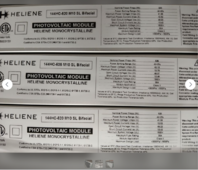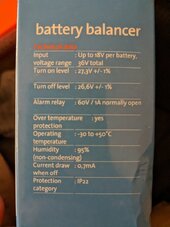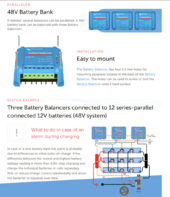Solar has been fascinating to me for a several years now and I'm finally building my first system. Mostly for a back-up grid goes down scenario to run the well pump, etc. System will be based around the 48V Growatt SPF 6000T, which I am buying barely used next week. I already have the batteries, not my first choice but lithium is so high. I have (12) Fiamm 12flx500 135Ah AGM batteries. These were manufactured at the end of 2021. Then used in a back up power system for I'm guessing some communications company for 2 years. So never really cycled just left on a float charge. I got them for $60 each and they are all very balanced. I haven't got the panels yet but the one's I'm looking at are commercial 520-550W. I think they are all around 50VOC. So my questions are:
1. The Growatt is rated for 250V - 5000W on the PV input. If I do (8) total of these panels... two sets of 4 in series, then hook those two sets in parallel... then I would end up with 200VOC, 25.4A at maximum power, and approx 4,400W. Am I correct with this? Do you think I could squeeze in 2 sets of 5?
2. And this might be a dumb question. Will the charge controller in the Growatt stop charging the batteries once they are full or is there something else I need to add?
3. I will do the batteries in 3 parallel sets of 4 in series to achieve 48V correct?
I'm sure I have more questions but all I can think of right now until I get everything. Will post pictures. Any suggestions or experienced criticism of the components welcomed. Thanks!
1. The Growatt is rated for 250V - 5000W on the PV input. If I do (8) total of these panels... two sets of 4 in series, then hook those two sets in parallel... then I would end up with 200VOC, 25.4A at maximum power, and approx 4,400W. Am I correct with this? Do you think I could squeeze in 2 sets of 5?
2. And this might be a dumb question. Will the charge controller in the Growatt stop charging the batteries once they are full or is there something else I need to add?
3. I will do the batteries in 3 parallel sets of 4 in series to achieve 48V correct?
I'm sure I have more questions but all I can think of right now until I get everything. Will post pictures. Any suggestions or experienced criticism of the components welcomed. Thanks!






